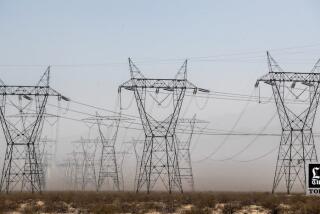William Fairbank, 72; Stanford Expert on Superconductivity
William Fairbank, whose work in low-temperature superconductivity laid the foundation for hundreds of scientific experiments worldwide, has died. He was 72.
Fairbank, professor emeritus of physics at Stanford University, suffered a heart attack Saturday while jogging near the Palo Alto campus, university officials said.
Fairbank researched the nature of superconductivity and participated in the search for gravity waves, subatomic particles called quarks, and monopoles, believed to be a component of magnetism.
His work is the basis of a multimillion-dollar project to test a final unproven prediction of Albert Einstein’s general theory of relativity.
Fairbank, who worked in his lab the night before his death, believed in what he called the “Anti-Murphy Law of Physics.” This held that when one understands an experimental situation correctly, three or four things come together to make the impossible possible.
He performed his first superconductivity experiment in 1947 with his brother Henry, also a physicist.
Laser Advancement
Fairbank’s work centered on the ability of some materials to offer no resistance to an electrical current if they are cooled to near absolute zero. Stanford said Fairbank’s influence on physics included the development at Stanford of the superconducting accelerator in which a linear accelerator is cooled to 2 degrees above absolute zero. The superconductivity allows for greater degrees of sensitivity and led to the first demonstration of a free electron laser.
His research often led into other areas. In 1975 he developed a machine in an experimental program that killed cancer cells without damage to organs or tissue. Designed for use on cancers of the mouth and throat and certain brain and lung tumors, the “Medical Pion Generator” used a stream of pions--subatomic particles generated by a high-energy accelerator--to kill the cells with minute nuclear explosions.
Fairbank was born in Minneapolis, graduated from Whitman College in Washington and earned his Ph.D. from Yale University in 1948.
Before joining Stanford in 1959, he taught at the University of Washington, Amherst College and Duke University and worked on the staff of the Radiation Laboratory at the Massachusetts Institute of Technology.




